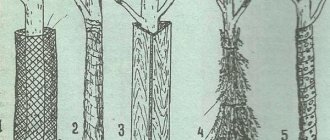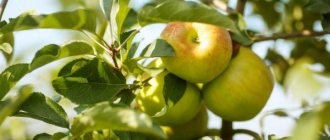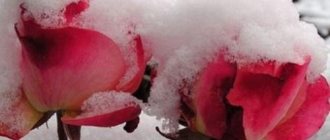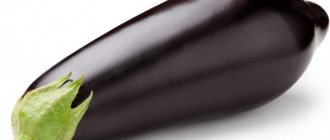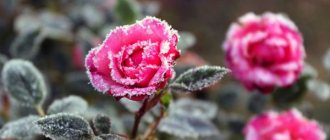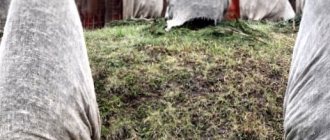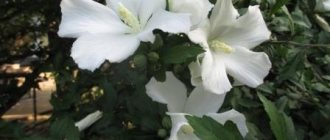Properly covering capricious roses for the winter is a responsible task, because you want to see a healthy and beautiful plant in the spring. But there is a real gardener's dream - roses that can safely overwinter without layers of dry foliage, spruce branches and lutrasil.
We have already told you in detail how to help roses survive the winter, but today we will talk about those varieties of “queen of flowers” that do not need shelter for the winter at all - there are such!
Roses that can successfully winter without shelter in the middle zone are most often hybrids of alba, rugosa, and spinozissima roses. You can also add winter-hardy varieties of American and Canadian selection to this list. Let's look at some of the most popular varieties of roses that do not freeze in the harshest winters (can withstand down to –40°C) and overwinter in an upright position.
Rose William Baffin (William Baffin)
Canadian park rose Explorer series.
The bush is erect, dense, very powerful and large, with thick shoots and dark shiny foliage. Does not require formative pruning.
The flowers are semi-double, deep pink with a light spot in the center, about 6-7 cm in diameter, with a very faint fruity aroma, growing in clusters of 10-25 pieces. Flowering is remontant, but in early summer and autumn two waves are especially strong. Flowers can be damaged by rain.
The variety is exceptionally winter-hardy, unpretentious in care, resistant to diseases, and easily propagated by cuttings.
Features of park roses and their advantages
Park roses form a dense foliage bush and are used in group and single plantings.
Park roses are a group of roses that are cultivated rose hips. These are strong ornamental flowering plants with many advantages:
- abundant early flowering;
- exceptional winter hardiness;
- high drought resistance;
- the ability to maintain decorativeness not only during flowering, but also during fruiting.
Many breeders are involved in breeding park roses. Thanks to their efforts, today you can find cultivated rose hips of different colors, and many varieties have double flowers. Park roses do not require complex care and have high vitality. In the Russian climate, all varieties of park roses can winter without shelter. Only very young bushes and seedlings need winter protection.
Rose Blanc Double de Coubert
An ancient rose of French selection, double form Rosa rugosa Alba.
A bush of medium to large size, erect, drooping with age, with strongly thorny shoots and wrinkled foliage that is bright green in summer (and bright yellow in autumn). Does not require formative pruning. Forms root shoots.
The flowers are semi-double, pure white, about 7-8 cm in diameter, with a bright sweet aroma, growing 1-3 pieces per stem. Remontant flowering from June to October. Flowers can be damaged by rain.
The plant is light-loving, frost-resistant, drought-resistant, unpretentious to soils, resistant to diseases, and tolerates urban conditions well.
Roses in the Moscow region: when and how to plant?
There is no need to rush to run to the nursery or order the variety you like. First of all, you need to decide on the time of year when it is best to plant these plants. The best option for planting roses in the Moscow region is spring. However, with the onset of April, there is no need to rush into this either.
Which roses are the most unpretentious and winter-hardy?
Important! The soil should warm up to +10 degrees.
Most often, this temperature is recorded at the end of April or beginning of May. At this time, the threat of recurrent night frosts also passes, which young plants do not tolerate well. But in the fall it is better not to plant roses in the Moscow region. Although autumn planting is very good, for example, for the southern regions. But recently the climate in Moscow has become warmer and during warm seasons roses can be planted in the fall. This work should be carried out from the second ten days of September until mid-October. You should not be late with planting, otherwise the seedlings simply will not have time to take root. By the way, early planting is also fraught; dormant buds can wake up and die with the onset of winter. And the bush will spend all the energy accumulated over the summer on them.
Rose Charles Albanel (Charles Albanel)
Canadian ground cover rose, hybrid of Rosa rugosa.
The bush is low-growing, dense, tending to grow in width, with strongly thorny shoots and wrinkled pale green foliage. Does not require formative pruning.
The flowers are semi-double, fuchsia (pink-lilac), about 7-8 cm in diameter, with a medium-strong aroma, growing 3-5 pieces per stem. The first flowering is abundant throughout the summer, repeated flowering with single flowers lasts until frost.
The plant is frost-resistant and unpretentious in care, resistant to diseases.
Park roses for the Moscow region, blooming all season
In addition to frost resistance, the flowering of the shrub is also an important factor. And among the large list of suitable varieties for growing in the Moscow region, it is worth highlighting those that can decorate the site throughout the entire season.
Rosarium Uetersen
The rose variety Rosarium Uetersen, which belongs to the German selection, can be grown in the Moscow region as a park or climbing rose. Throughout the season, its bushes are strewn with large, rich pink buds. Terry flowers are collected several times in large brushes.
Flowering is wavy, where the first wave is the most abundant. The bush is able to bloom until frost, and under favorable conditions, the breaks between waves are almost imperceptible.
Rose flowers Rosarium Jutersen practically do not fade in the sun
Rose Golden Gate
Another variety of park rose that takes root well in the conditions of the Moscow region and pleases with abundant and long-lasting flowering is Golden Gate. It was developed in Germany in 2005 and has already proven itself to be resistant to many adverse factors and unpretentious.
The bush is powerful, tall, capable of reaching up to 3 m in height and 1 m in width. Flowering is long, but with short breaks (there can be up to 3-4 waves per season). The buds are large, lush and have a beautiful yellow color.
In addition to the attractive yellow hue of the buds, the Golden Gate rose delights with its unique aroma with citrus notes
Variety Princess Alexandra of Kent
One of the representatives of Austin roses, Princess Alexandra of Kent, can boast of abundant and repeated flowering throughout the season, even in the most unfavorable conditions, such as in the Moscow region.
The variety is tall, up to 1.5 m in height. The flowers on the stems are collected in clusters of three. The buds are densely double, large, cup-shaped. Their color is soft pink. The aroma when opening is classic, and as it ages, notes of citrus and currant appear.
In addition to almost continuous flowering, the buds of the Princess Alexandra of Kent rose keep their shape perfectly in any weather
Rose Snow Pavement (Snow Pavement), or Schneekoppe
Rose of German selection, hybrid Rosa rugosa.
A medium-sized, spreading bush that tends to spread outwards with thorny shoots and wrinkled light green foliage.
The flowers are semi-double, with long petals, white with a pink or lilac tint, about 6-7 cm in diameter, with a rich aroma, growing in small clusters of 5-10 pieces. The rose is a repeat bloomer, single flowers last until frost. The resistance of flowers to rain is average.
The plants are photophilous, frost-resistant, unpretentious to soils, disease resistance is above average.
The best hybrid tea varieties of roses for the Moscow region
Augusta Louise
Rating: 5.0
The first place in our ranking is occupied by a hybrid tea variety, which has good endurance both during periods of prolonged rains and severe frosts. It was introduced in Germany in 1999 and gained popularity among Russians. A rose with large, dense flowers changes shades depending on weather conditions. Gardeners can see peach, soft pink, orange, and cream flowers on a strong compact bush.
The petals are wavy at the ends, which creates the effect of splendor. The buds are iridescent, yellow-orange. Disclosure occurs in three stages. The first two are the most abundant. The third flowering lasts until the end of October. The leaves are dark green, medium sized with a sheen. Another difference of the variety is its intense smell, reminiscent of a fruity aroma. An adult bush can reach 1 meter in height. Roses are suitable for cutting, making bouquets and decorating festive events.
For planting, it is advisable to choose sunny places without access to strong winds. According to reviews from gardeners near Moscow, this is one of the popular varieties that combines all the necessary characteristics for planting at dachas in this area. Lush flowers delight the eye near arbors, as hedges, and are used in combination with other varieties.
Gloria Day
Rating: 4.9
Another hybrid variety is admired by gardeners not only in the Moscow region, but throughout the world. "Gloria Day" takes pride of place in our ranking. Very often you can hear that this highly decorative species is called the most popular rose of the 20th century and, looking at it, everyone agrees with this statement. The flowers are large, voluminous, densely double. The shade is multifaceted. The pith can be intense yellow or pale lemon. The edging is crimson or pink-lilac.
The petals are dense with wavy or smooth edges. An adult bush reaches 150 cm in height, but can stop growing at 80 cm. The leaves are jagged, dark green in color with a shiny surface. The smell is barely noticeable, light. Flowering begins in early June and continues until October.
The plant is used to decorate alpine slides. It looks good both alone and in combination with other roses. It is grown on an industrial scale. Sections are widely used in floristry, and petals are widely used in cosmetology. The variety is frost-resistant, tolerates temperature changes well, is not susceptible to diseases, and does not require intensive care. When properly planted, it develops quickly.
Rose Hansa (Hansa)
An ancient rose of Dutch selection, a hybrid of Rosa rugosa.
The bush is medium to large in size, symmetrical, slowly growing, erect, with arched, strongly spiny shoots and wrinkled bright green foliage in summer and orange in autumn. Does not require formative pruning. Forms root shoots.
The flowers are semi-double, “disheveled”, lilac-pink in color, about 7-10 cm in diameter, with a clove aroma of medium intensity. They grow in small clusters of 3-5 pieces. Blooms in waves from June to September. The resistance of flowers to rain is average.
The plant is exceptionally frost-resistant and disease-resistant, shade-tolerant, and unpretentious in care.
Which roses are suitable for growing in the Moscow region
In the Moscow region, you can grow winter-hardy roses that can withstand frosts down to -35 °C without shelter. Some gardeners love varieties that can withstand low temperatures down to -30...-25 oC. However, they need to be covered for the winter. Otherwise, the bush will freeze.
This is interesting: When to dig up and plant tulips, daffodils and other flower bulbs according to the Lunar calendar
More heat-loving plants should not be planted in such a climate: without the construction of winter gardens and greenhouses, it will be impossible to save them in the cold season. So, we will list the best varieties of roses for keeping in the Moscow region, breaking them into groups.
Climbing
The best varieties of climbing roses for the Moscow region:
- Amadeus . It forms climbing bushes, the length of which reaches 3.5 m and the width - 2 m. The variety is distinguished by the rapid development of lateral shoots, densely covered with green foliage with a slight gloss. The flowers, reaching a diameter of 8-9 cm, are collected in brushes of 5-7 pieces. They are painted a rich bright red color. Flowering is abundant, early and continuous. The shrub is highly resistant to diseases and is not afraid of rain. However, it will die when the temperature drops to -25 o C. Therefore, Amadeus requires winter shelter.
- Flamentanz . This is a climbing shrub, the length of its lashes reaches 3-5 meters. Its shoots are covered with light green leaves. Brushes are formed on them, including 2-3 flowers, the diameter of which reaches 7-8 cm. The color of the petals is red with a pink tint. The aroma is weak. Flowering is one-time, but long-lasting. The plant has average resistance to diseases. However, it can withstand frosts down to -35 °C. Therefore, in the Moscow region it can be grown without shelter for the winter.
- Apple Blossom . This is a rose that forms lashes up to 4 m long and up to 3 m wide. They are covered with dark green leaves with a glossy surface. Brushes are formed on them, including up to 15 small flowers, the diameter of which does not exceed 3 cm. The shape and appearance of the flowers are more reminiscent of rose hips. The color is soft pink, lighter in the center. Single flowering. The plant has low resistance to diseases and rain. But it tolerates frosts well down to -30 o C. Therefore, many gardeners grow it in the Moscow region without shelter.
Climbing rose bushes are created to decorate arches, camouflage unsightly building walls and high fences.
Hybrid tea
The best varieties of hybrid tea roses for the Moscow region:
- Gloria Day . Forms a powerful bush with an abundance of side shoots. Its height can reach 1-1.5 m, and its width – 1 m. The branches are covered with large foliage, painted dark green. On each shoot, only 1 flower is formed, the diameter of which can reach 15 cm. The color is yellow in the center and crimson along the edges. However, over time, the crimson color fades to a pale pink. The aroma is weak. Repeated flowering. Resistance to rain and diseases is average. The variety is moderately resistant to frost and can withstand temperatures down to -25 ° C. Requires winter shelter.
- Password . Forms a powerful but compact bush with a large number of side shoots. Its height reaches 70-90 cm and width – 50 cm. The shoots are covered with thick dark green leaves. Only 1 flower can form on each shoot. Its width when fully expanded is 14-15 cm. The color is rich bright pink with purple hues. The aroma is sweet and very strong. Repeated flowering. Resistance to diseases and precipitation is average. The variety can tolerate winter temperature drops down to -25 ° C. He needs the construction of a winter shelter.
- Hommage Barbara . Forms a compact bush, the height of which does not exceed 70-80 cm, and the width - 50 cm. The shoots are covered with dark and large foliage. On each of them, 1 bud is formed, the diameter of which, when fully opened, is 10-11 cm. The color is dark red. The petals are cast in gold and black velvet. The aroma is weak. Flowering is abundant and repeated. Resistance to diseases is average, and resistance to rain is high. In the Moscow region, this variety of roses needs to be insulated for the winter, as it can withstand frosts down to -25 ° C.
- Aphrodite . This is a compact variety of roses that forms a bush up to 80 cm high and up to 60 cm wide. The shoots are well leafy, each of them produces only 1 bud, the diameter of which reaches 12 cm when fully opened. The color of the flowers is delicate pink with a porcelain tint. The aroma is weak. Repeated flowering. Resistance to rain and fungal diseases is high. Aphrodite needs to build a winter shelter, as she does not tolerate frosts below -25 ° C.
This is interesting: Rosa Cordana mix. How to care after purchase in the garden and at home. Rules for replanting a plant
Hybrid tea varieties of roses are more demanding in terms of maintenance conditions. But they have an impeccable flower shape and are ideal for cutting. Therefore, this is the most popular group of garden roses.
Shrubs
Scrub roses suitable for the Moscow region:
- Rhapsody in blue . Forms an erect bush up to 1.2 m high and up to 0.6 m wide. The shoots are densely leafy. They form inflorescences, which include from 3 to 5 flowers, the diameter of which can reach 6 cm. The color of the petals is purple. Against their background, golden stamens look very impressive. The aroma is average, repeat flowering. Rhapsody in blue is very resistant to rain and disease. But this is one of the few park roses that requires shelter for the winter: it tolerates frosts of at least -25 ° C.
- New Down . This is a climbing rose that is most often grown as a scrub rose. It can reach 2-2.5 m in height and 2 m in width. Its shoots are covered with dense green foliage with a gray tint. Brushes are formed on them, including up to 5 flowers, the diameter of which, when fully opened, is about 8 cm. The color is light pink with a silver tint. The aroma is average. This is a repeat flowering variety. New Down has average resistance to diseases and precipitation, but it tolerates winter well without shelter if frosts do not fall below -31...-30 °C.
- Bonika 82 . Forms a low (up to 1 m) but wide bush (up to 1.2 m), highly branched and covered with small dark green foliage. Inflorescences are formed on the shoots, consisting of 5-10 flowers, the diameter of which can reach 6 cm. The color of the petals is delicate pink. The edges of the flowers fade to a pale pink color over time. The aroma is weak. Flowering is always repeated. The variety is characterized by average resistance to fungal infections and precipitation. But it tolerates winters well, since its bushes are not afraid of frost down to -30 ° C.
Shrubs are park varieties that resemble a rosehip bush in appearance. These are the most unpretentious plants to maintain and care for, most of which can overwinter without shelter.
Floribunda
The best varieties of roses for the Moscow region from the floribunda group:
- Angela . It forms a bush, the height of which can vary between 0.8-1.5 m. Dark green leaves with a waxy gloss sit on the shoots. This is a re-blooming rose variety. Clusters of 3-7 flowers, painted bright pink, form on the branches. The center of flowers, the diameter of which does not exceed 4 cm, is lighter. The aroma is average. Angela tolerates heat well and is highly resistant to diseases and precipitation. But the rose requires light shelter for the winter, since frosts below -30 ° C can harm it.
- Maria Teresa . Forms a compact bush up to 70 cm high and up to 40 cm wide. The shoots are covered with small leaves. A brush is formed on each stem, consisting of 3-5 flowers, the width of which, when fully opened, is about 7 cm. The color is delicate pink, the aroma is weak. This is a repeat blooming rose. It has average resistance to various diseases, but its flowers do not deteriorate from rain. The variety can withstand temperatures down to -25 o C, so it should be covered for the winter.
- Leonardo da Vinci . The variety forms medium-sized bushes up to 1.1 m high and up to 0.6 m wide. The stems are densely covered with brightly colored leaves, which can be either light or dark green. The surface of the leaves is covered with skin. Continuous flowering. Clusters of 3-5 densely double flowers are formed on the shoots, the width of which can reach 10 cm. The color is intense pink. The flowers smell weak. This is a very resistant variety that is not afraid of fungal infections and rain. For the winter it requires insulation, as it can be killed by frosts below -25 oC.
This is interesting: How can you feed peonies after flowering: the best homemade and mineral fertilizers
Floribunda is a young group of roses characterized by long and vigorous flowering. They occupy an intermediate position between hybrid tea and polyanthus varieties.
David Austin Roses
Popular varieties of English roses grown in the Moscow region:
- Golden Celebration . This is a repeat-blooming variety of roses that forms bushes up to 1.5 m in height and 1.2 m in width. The shoots are densely covered with leaves, painted in an intense green color. From 3 to 5 flowers are formed on the stems, the diameter of which can reach 16 cm. The color is bright yellow with a golden tint. The flowers have a very strong sweet aroma. The shrub has very high resistance to diseases, but is afraid of rain. For the winter it requires shelter, since the shoots die at temperatures below -25 o C.
- Crown Princess Margaret . It forms a tall bush, reaching a height of 1.8 m and a width of 1 m. On stems strewn with dark foliage, it forms up to 5 flowers, which, when fully opened, are up to 11-12 cm in diameter. The color of the petals is soft orange with an apricot tint. The aroma has medium intensity. Repeated flowering. The variety is highly resistant to fungal infections. It is moderately resistant to rain. In winter, it requires light shelter, since frosts from -25 o C and below can be destructive for the Princess.
- Crocus . Forms a spreading bush up to 1.2 m high and up to 1 m wide. Inflorescences consisting of 3-5 buds are formed on the stems. When opened, their diameter can reach 12 cm. The color is cream along the edges and light apricot in the center. The aroma is weak, and the flowering is repeated. Crocus is characterized by average resistance to diseases and precipitation. But this variety is one of those that can winter without shelter, since it is not afraid of frosts down to -30 o C.
All David Austin roses on sale in the Moscow region are suitable for growing in this area. David himself is very sensitive to his flowers, so he will never distribute them where the climate is not suitable for them.
Overwintering without shelter
Frost-resistant roses that do not die at temperatures down to -35 o C do not require winter shelter when grown in the Moscow region.
The best of them include:
- Pink Robusta . It is distinguished by the development of a lush bush, the width and height of which can reach 1.25-1.5 m. The shoots are heavily leafy. The medium-sized leaves are dark green and covered with a waxy coating. Brushes are formed on the stems, consisting of 5-10 flowers, the width of which can be 8-10 cm. The color is soft pink. There is a yellow spot in the center. The aroma is weak. Continuous flowering. Resistance to diseases, frost and precipitation is high.
- Polar Star . If you look at this plant, you won't even realize that it is a rose. She is not like the roses that we are used to seeing. However, this is such a hardy variety that it can withstand frosts down to -40 ° C without shelter. You can plant it once and forget about it. But every summer, a climbing bush, the length of which can reach 5 m, will delight you with an abundance of white “stars”, the diameter of which reaches 5 cm. But the polar star is not resistant to precipitation. But it has average resistance to diseases.
- Flamentanz . This variety of roses has already been described in the block on climbing roses.
Knowing which roses can be kept in open ground in the Moscow region, you will select the appropriate variety. And the right choice is the key to successful cultivation of rose bushes.
Uncovered varieties of roses are especially valuable in the Moscow region, since they do not require annual insulation before winter. But if the priority is the shape, size and aroma of flowers, then you will have to give preference to less winter-hardy plant species. And their cultivation is unthinkable without shelter for the winter.
Rose Jens Munk (Jens Munch)
Canadian park rose from the Explorer series, a hybrid of Rosa rugosa.
The bush is medium-sized, erect, round, strong, prone to thickening, with prickly arched shoots and bright green shiny wrinkled foliage.
The flowers are semi-double, soft pink with a slight lilac tint and sometimes with white streaks, about 7-8 cm in diameter, with a light aroma, growing in small clusters of 2-5 pieces. Repeat-blooming rose - the first flowering is abundant, subsequent ones are more modest. Flowers can be damaged by rain.
The plant is exceptionally winter-hardy, resistant to black spot, although it can be affected by powdery mildew and rust. Easily propagated by green cuttings.
Winter-hardy varieties of climbing roses
Quite often, garden owners purchase climbing varieties of frost-resistant roses. The reason is the long, twisting and flexible stems. They can be positioned vertically or at an angle using support and garters. Often these roses are used to decorate arches and arbors, and are used to disguise defects in a structure (for example, they cover cracks in the walls of old houses, etc.).
The best varieties of climbing roses for Siberia and the basic rules for planting them - video
Rosarium Uetersen
A plant with large flowers. Brought out in the 70s of the last century. The rose variety “Rosarium Jutersen” did not immediately gain popularity. Only at the beginning of the century they began to actively cultivate it. The size of the buds is up to 15 cm in diameter. The palette is limited to “classic” pink. The crown is luxurious, with dense foliage. Suitable for the southern part of the garden plot.
Santana
An adult rose shrub "Santana" grows up to 3 m. The buds are arranged either singly or in clusters. Diameter 12 cm. Bright blooming with rich red flowers immediately attracts attention. The flowering period of this winter-hardy variety is long. To plant one specimen, a space measuring 50 x 50 cm is required. It is planted mainly in the southern territory in spring or autumn.
Golden Showers
Another representative of unusual yellow roses. Flowers with double petals are incredibly fragrant. "Golden Showers" is the most frost-resistant rose of all the vines.
Flowering lasts until the last days of autumn. Blooms several times a year. The height of an adult plant reaches 2 m. It is undemanding to the composition of the soil. Has good immunity from diseases.
On a note!
Climbing roses bloom throughout the summer season. They differ in color and size of buds. Terryness is also present to varying degrees. Among the representatives of climbing roses there are plants with small flowers and large ones.
Rose Queen of the North (Zariza Sewera, Empress of the North, Kaiserin des Nordens)
An ancient rose of Russian selection, a hybrid of Rosa rugosa.
The bush is medium-sized, erect, quite dense, with vine shoots and light green foliage, which colors very beautifully in autumn.
The flowers are double, dark pink with a purple tint, about 6-7 cm in diameter, with a weak aroma, growing in clusters of 3-7 pieces. Flowering is almost continuous, in waves, noticeably weakening towards the end of the season. The resistance of flowers to rain is average.
The plant is exceptionally winter-hardy and has a high degree of tolerance to unfavorable growing conditions.
Reviews of rose growers about varieties of park roses
Königin von Danemark flowers inherit all the advantages of the best old roses.
Many Russian rose growers are happy to plant park roses on their plots, and from their reviews you can get an expanded understanding of the listed varieties:
“The Queen of Denmark (Konigin von Danemark) is a unique rose. It grew from a cutting and has been sitting on its roots for 5 years. I don’t cover it at all - it lives and blooms perfectly. The aroma is fabulous. I make jam and my own rose oil from it. Dried petals are placed in a sachet. Blooms profusely and for a long time. Low-maintenance, strong, does not get sick. Often shoots offspring, but not far, next to the bush. I see only two drawbacks: it is very prickly, and all sorts of pests eat it with pleasure, it must be protected” (Elena, Tver region).
“Wonderful Hansaland variety! Decorativeness is beyond praise: the foliage is shiny, beautiful, the flowers are bright. And the durability is amazing! I grow 4 bushes of this variety. In 2014, in October there were abnormal frosts (it stayed -200C for a whole week), the roses were not yet covered by this time, and a lot of them were frozen. But all the Hanzalands held out. Since then I haven’t covered them at all” (Elena, Kostroma).
“Sir Thomas Lipton has settled down well in Khabarovsk. I planted it in a row along the fence, without covering it. The variety is good for everyone, but it doesn’t like rain. If prolonged periods occur, spots appear on the petals and the flowers hang in rags. And so it’s a normal rose, it doesn’t get sick” (Marina, Khabarovsk Territory).
“Charles Albanel is a rather prickly rose and will not be suitable for cutting. And looks modest in the background
Park roses tolerate shade well, but bloom and develop better in sunny areas.
"aristocrats". But she has many other advantages. It blooms all summer, the flowers are large and smell nice. I really like its bush shape, you can form balls. She doesn’t get sick at all, grows under any conditions, and responds with gratitude to any care. Winters well without any shelter. If you throw snow on it (and the bush is short, it allows it), then it can calmly survive -500C. Lives long” (Olga, Yekaterinburg).
“Agnes is an unpretentious rose. I like its delicate flowers, such amber balls, although they deteriorate in the rain. The aroma is fruity, not rosehip at all. It overwinters normally without shelter; sometimes only the ends of the shoots freeze. Disadvantages - it blooms only once and by August it gets black spot” (Lyubov, Moscow region).
From the above comments it is clear that park roses actually do well in different regions of Russia - from the middle zone to the Urals and Siberia.
Tip #2. Even winter-hardy park roses will not be harmed by pre-winter hilling. The tree trunk circle should be well watered and covered with a thick layer of clean, dry foliage. In such conditions, frost will definitely not damage the sensitive root collar.
Rose Minette
An ancient rose of French selection, hybrid Rosa Alba.
The bush is medium or large in size, erect, round, prone to spreading, with numerous shoots covered with sparse sickle-shaped thorns and light green smooth foliage. Does not require regular pruning. It never sets fruit.
The flowers are double, pale pink, slightly darkening towards the end, about 7-10 cm in diameter, with a strong aroma, 1-3 pieces per stem. Flowering is once, very abundant, begins in June and lasts several weeks. The resistance of flowers to rain is weak; buds in a humid environment are affected by gray rot.
The plant is exceptionally winter-hardy and unpretentious, resistant to black spot and powdery mildew, but at the same time very light-loving.
Canadian varieties of roses are winter-hardy
Canadian ground cover winter-hardy roses were obtained by combining the rugosa rose and representatives of Cordes. The birthplace of selection is Canada.
Canadian roses: advantages and best varieties - video
Queen Elizabeth
A touching plant with delicate petals, light pink color. Petals are semi-double. The brush contains up to 15 colors. Should be protected from direct sunlight to prevent color fading.
Every 6 years, rejuvenating pruning is required, when the shoots are cut off to the very root. According to gardeners, the Queen Elizabeth rose is a rather unpretentious flower, but does not like a too humid climate.
Jens Munk
Of all Canadian roses it has the strongest root and stem system. This allows the plant to grow freely up to 2 m in height. The flowers are small, up to 7 cm in diameter. It has a persistent aroma and elegant shape.
JP Connell (JP Connell)
Found in the Explorer collectibles. This is a yellow rose with a hint of lemon. There are no large brushes. But in the very center of the flowers there are bright red stamens, which are simply impossible not to notice. Terry petals. If the crown is not trimmed from time to time, it quickly grows overgrown. Blooms in waves. Disadvantages include susceptibility to black spot in humid climates. "JP Connell" is considered winter-hardy, but, according to reviews from flower growers, it still needs shelter for the winter.
Leonardo da Vinci (Leonardo da Vinci)
Belongs to floribundas. Blooms luxuriously, with many bright pink flowers. The flowers are flat and double. This variety smells pleasantly of the “classic” scent of the Rose family. Looks aristocratic. Rose "Leonardo da Vinci" is not susceptible to powdery mildew or rust due to the development of resistance to pathogens.
Rosa Leonardo da Vinci - photo
On a note!
Canadian roses can withstand temperatures down to -40 degrees below zero.
Rose Poppius
An ancient rose of Swedish selection, a hybrid of Rosa spinosissima.
The bush is tall, erect, does not require support, with thorny shoots and matte light green foliage (orange-yellow in autumn).
The flowers are single, semi-double, flat, pink, about 6-7 cm in diameter, with a rich, pleasant aroma. This rose is a single bloomer. Blooms early, on last year's shoots, blooms within 10-14 days. The resistance of flowers to rain is average.
The plant is exceptionally winter-hardy, unpretentious in care, and its resistance to diseases is above average.
Criteria for choosing park roses for the Moscow region
There are no special criteria for choosing park roses for the Moscow region; as a rule, these are only purely individual preferences. But any gardener pays attention to the budding of the plant. And the earlier and longer the bush blooms, the more popular the variety. In addition, many take into account versatility, so that the range of shades pleases not only the eye, but also matches the style direction of the garden. No less important are frost and drought resistance, as well as immunity to diseases and pests.
